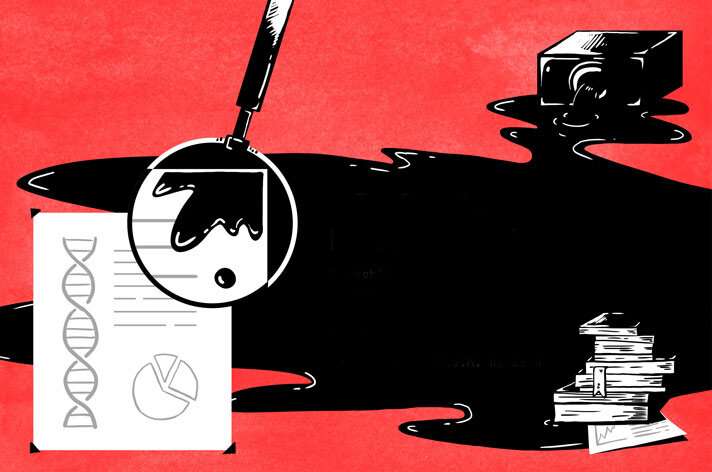Credit: Marlies Nillesen
In his dissertation, Serge Horbach examines the problems with scientific integrity. Where are things going wrong, how can scientific journals help filter out bad research, and what can universities do? Horbach will be awarded his Ph.D. by Radboud University on 13 February.
It is a much-discussed question in academia: what is threatening scientific integrity and what can we do about it? Horbach's research reveals that the Achilles heel of scientific integrity tends to be carelessness and the processes themselves. Two years ago, Horbach published a study on so-called HeLA cells, which are often used in biomedical research. These cells were found to be contaminating other cell lines, making them unusable in scientific research. Horbach researched this and other integrity issues in his dissertation.
Shape the norms together
Horbach examined the way universities usually respond to alleged cases of research misconduct. "It usually goes like this: first, the situation is assessed by an ad-hoc committee, which is well-intentioned but lacks experience," explains Horbach. "Most of their conclusions aren't definitive and are later supplemented or even contradicted by other committees. In the aftermath, the university issues new rules or guidelines, which those involved tend to regard as rather symbolic." Another common tactic is to blame the individual instead of offering a real solution for a structural problem.
It is clear that universities are struggling with the issue of integrity; however, formulating a clear standard of integrity has proven difficult. "Take the case of Amsterdam economist Peter Nijkamp, for example," Horbach continues. "He was accused of self-plagiarism in 2013, but claimed that 'that's just how it goes in the field of economics.' His colleagues confirmed this, despite the fact that recycling your own work is considered wholly unacceptable by historians." What is generally accepted as good practice tends to differ per discipline and per situation. "We need to give shape to those norms together," says Horbach.
Customisation, openness and a safe culture
According to Horbach, the only way to solve the integrity problem is to develop custom norms per discipline, per country, and per research culture. "First, we need to stop only singling out individual researchers and telling them what they can and can't do. Instead, we need to find more systemic solutions. For example, by making the number of publications and the impact of those publications less important. We're already taking steps in the right direction, which is good."
The tendency towards more openness and more transparency is another positive development, says Horbach. Releasing research data and peer reviews can help. "But those don't work equally well in all fields. Determining and publishing your research plan in advance, for example, is easier for biomedical research and psychological research than for some branches of the humanities."
Universities can also create a safe research culture in which integrity issues can be easily discussed and addressed.
Peer review process
A much-discussed topic both within and outside the scientific domain is the peer review process. This external assessment of publications by other researchers aims to safeguard quality. As part of his Ph.D. research, Horbach joined the editorial board of two major commercial, scientific publishing houses.
"I wanted to know who made the decisions and how they ensured quality. While quality certainly played a role in the selection process, other interests came into play as well. Ultimately, the goal of the publishing house is to turn a profit. Their focus on a high volume of article submissions, a speedy review process, and a good reputation might shift the focus away from integrity."
Complex editorial process
As it happens, the editorial process is far more complex than many researchers realize. "What struck me is that the processes are structured hierarchically, with lots of different editors. There's a manuscript editor (who often works in a low-wage country), an editor-in-chief, an assistant editor, an associate editor, and reviewers. They all have their own roles."
In fact, reviewers are just one of the links in the much larger editorial chain of which the peer review process is a part. "The entire process can go one of many directions. As researchers, we need to be aware of the role we give publishers and the fact that their interests are different from ours. It's also important to understand that they don't hold all of the power; in the end, journals need us—the authors and reviewers—equally much."
Provided by Radboud University























